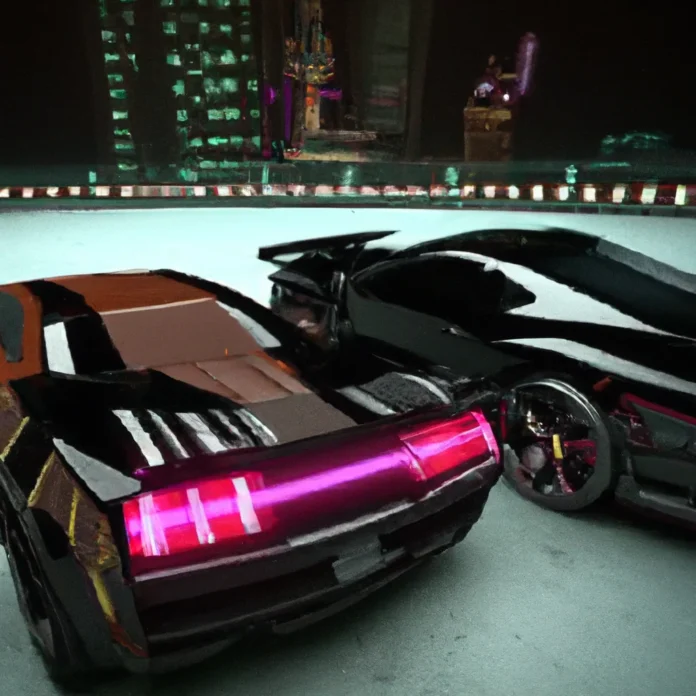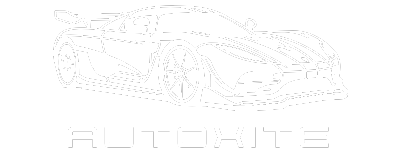Introduction: The Rise of Futuristic Looking Cars in 2025
The automotive world in 2025 is witnessing a striking shift as futuristic looking cars take center stage. These vehicles, with their bold lines, advanced technology, and imaginative concepts, are no longer just sketches in design studios—they are rolling onto our streets. The excitement is palpable, with car enthusiasts and everyday drivers alike drawn to the promise of innovation and style that feels straight out of science fiction.
From shimmering LED signatures to aerodynamic silhouettes that slice through the air, the modern automobile is being reimagined. The buzz surrounding these new designs reflects broader changes in technology, sustainability, and the way we envision transportation itself.
Why Are Futuristic Cars Gaining So Much Attention in 2025?
Interest in futuristic cars is surging this year due to a convergence of factors. Automakers are racing to showcase their most advanced models, driven by consumer demand for vehicles that offer both performance and sustainability. Social media platforms amplify every unveiling, turning each new model into a viral sensation overnight.
Additionally, the integration of cutting-edge features—such as autonomous driving, augmented reality dashboards, and next-generation electric powertrains—represents a paradigm shift. These vehicles are not just about transportation; they symbolize progress and a forward-thinking mindset. As we outlined in our article on the best cars for 2025, the appetite for innovation has never been stronger.
What Makes a Car Look Futuristic?
A futuristic car is defined by more than just a sleek exterior. It is the culmination of thoughtful design, advanced materials, and technology woven seamlessly into every curve and surface.
Defining Futuristic Design Elements
Key features that signal a futuristic look include streamlined shapes, minimalistic grilles, and bold lighting signatures. Designers favor smooth, unbroken lines and sculpted panels that evoke speed and efficiency even when the car is standing still. Many embrace glass roofs, hidden door handles, and flush surfaces for a cleaner aesthetic.
- Aerodynamic contours that reduce drag and enhance performance
- Unique lighting patterns with LED, laser, or OLED technologies
- Large, panoramic glass elements for openness and visibility
- Minimalist interiors with digital controls and touch-sensitive surfaces
The Role of Technology in Shaping Aesthetics
Technology plays a pivotal role in how these cars look and feel. Integrated sensors, cameras, and LiDAR systems are now cleverly disguised within body panels. Digital interfaces replace traditional buttons, while customizable ambient lighting creates an immersive atmosphere inside the cabin. The result is a harmonious blend of form and function that defines the modern era of car design.
History of Futuristic Car Design: From Concept to Reality
The journey toward today’s futuristic cars began decades ago, with visionary designers and concept vehicles that pushed the boundaries of imagination. Each era has left its mark, influencing what we see on the road today.
Iconic Futuristic Cars of the Past
Some of the most memorable futuristic designs include the 1950s Chevrolet Corvette concept, the wedge-shaped Lamborghini Countach of the 1970s, and the original Tesla Roadster. These cars challenged conventions with their daring shapes and advanced features, making lasting impressions on both designers and the public.
How Past Concepts Influence 2025 Models
Modern automakers often draw inspiration from these icons, updating their bold ideas with contemporary materials and technologies. The sleek, low-profile bodies and gullwing doors that once seemed extravagant are now being refined for mass production, making the extraordinary accessible.
Top Futuristic Cars Launching in 2025
This year brings a wave of highly anticipated models from both established manufacturers and innovative newcomers. Each brand approaches the idea of futurism in its own way, but all share a commitment to pushing the envelope.
Tesla’s 2025 Lineup: Setting the Bar for Innovation
Tesla continues to lead with vehicles that blend high performance, advanced autonomy, and striking design. Their 2025 lineup introduces sculpted exteriors, adaptive lighting systems, and interiors that feel more like living rooms than cockpits. Expect even more streamlined forms and digital interfaces, setting new standards for what drivers can expect.
Mercedes-Benz Vision Series: What’s New?
The Mercedes-Benz Vision Series dazzles with its illuminated grilles, dynamic wheel designs, and seamless glass surfaces. The interiors feature sustainable materials, customizable digital panels, and a focus on passenger comfort. Mercedes continues to redefine luxury through innovation, creating vehicles that feel both elegant and futuristic.
Audi’s Futuristic Offerings for 2025
Audi’s 2025 models showcase a commitment to both performance and technology. Their vehicles feature advanced lighting arrays, integrated sensors for autonomy, and interiors that prioritize minimalism and user-centric controls. Audi’s design language remains crisp and modern, with bold geometric shapes and color-shifting finishes.
BMW’s Vision for the Future: 2025 Highlights
BMW’s vision for 2025 includes modular platforms, bold aerodynamic features, and interactive digital displays throughout the cabin. Their use of lightweight materials and active aerodynamic elements highlights a focus on efficiency without sacrificing style. BMW’s attention to detail ensures that every surface serves both an aesthetic and functional purpose.
Lexus and Japanese Automakers: Pushing the Boundaries
Japanese brands like Lexus are taking bold steps with their 2025 offerings, incorporating origami-inspired bodywork and next-generation hybrid systems. Their designs blend tradition with futuristic elements, resulting in cars that are both visually stunning and technologically advanced.
Electric Vehicles: Leading the Futuristic Trend
Electric vehicles (EVs) stand at the forefront of the movement toward futuristic design. Their unique powertrains allow for new possibilities in both form and function, enabling designers to rethink everything from the chassis up.
How EV Technology Shapes Car Design
Without the need for bulky engines or transmissions, EVs offer unprecedented freedom in layout and styling. Flat floors, short overhangs, and spacious cabins are now possible, while the absence of exhaust systems leads to cleaner lines at the rear. Designers can focus on aerodynamics and aesthetics without compromise.
Battery Innovations and Their Impact on Looks
Advancements in battery technology have enabled thinner, lighter packs that can be integrated seamlessly into the car’s floor. This not only improves driving dynamics but also allows for lower rooflines and more dramatic silhouettes. As we discussed in our piece on the real cost of futuristic car innovations, these breakthroughs are reshaping both the technical and visual aspects of modern vehicles.
Autonomous Driving: The Ultimate Futuristic Feature?
Autonomous driving systems are transforming not just how cars operate, but how they look and feel. The shift toward self-driving technology is having a profound impact on both exteriors and interiors.
How Self-Driving Tech Changes Car Exteriors
With autonomy, the need for traditional mirrors, grilles, and even headlights is being re-evaluated. Cameras and sensors are integrated subtly into the bodywork, while clean surfaces and distinctive LED signatures replace conventional elements. The result is a more streamlined, futuristic appearance that stands out on any road.
Interior Transformations for Autonomous Cars
Inside, the absence of a dedicated driver’s seat or steering wheel opens up new possibilities for comfort and entertainment. Rotating seats, interactive screens, and customizable lighting create a lounge-like atmosphere. Passengers can relax, work, or socialize as the car handles the journey.
Smart Materials and Advanced Manufacturing
The use of innovative materials and manufacturing processes is crucial in bringing futuristic designs to life. These advances enable shapes and features that were once impossible, while also improving safety and sustainability.
What Are Smart Materials in Car Design?
Smart materials refer to substances that can change properties in response to external stimuli. In car design, these include self-healing paints, shape-memory alloys, and adaptive glass. They enhance durability, safety, and aesthetics, making cars smarter and more resilient.
3D Printing and Its Role in Futuristic Cars
3D printing allows for the creation of complex, lightweight components with intricate geometries. Automakers use this technology to prototype parts quickly and produce customized elements for both interiors and exteriors. This flexibility leads to more experimental, futuristic designs.
Sustainable Materials: Eco-Friendly Meets Futuristic
The push for sustainability is driving the adoption of recycled plastics, natural fibers, and vegan leathers. These materials offer both environmental benefits and a modern, high-tech appearance. As we highlighted in our article on the real cost of new futuristic cars, eco-friendly choices are becoming integral to the identity of next-generation vehicles.
Aerodynamics and Sleek Silhouettes: The Science Behind the Look
Aerodynamics is at the heart of futuristic design, dictating both the shape and efficiency of modern vehicles. Every curve and angle is carefully engineered to reduce drag and improve performance.
How Aerodynamics Drives Design Choices
Low-slung bodies, tapered tails, and smooth underbodies are hallmarks of aerodynamic design. These features not only boost efficiency but also create a visual impression of speed and agility, even at a standstill. Designers use wind tunnels and simulation software to perfect every detail.
Active Aero Features in 2025 Cars
Many 2025 models incorporate active aerodynamic elements, such as adjustable spoilers and grille shutters. These features adapt in real-time to optimize airflow, balancing performance with efficiency. The impact is both functional and striking, lending a sense of motion and purpose to the car’s appearance.
Lighting Innovations: The Future is Bright
Lighting is one of the most expressive elements of futuristic car design. New technologies allow for creative flourishes that serve both safety and style.
LED, Laser, and OLED Lighting Trends
Manufacturers are pushing boundaries with LED, laser, and OLED lighting. These systems provide crisp, customizable illumination, with intricate signatures that make each model instantly recognizable. Thin, flexible light strips can be bent and shaped in ways never before possible.
Dynamic Lighting for Safety and Style
Dynamic lighting systems adjust automatically to driving conditions, enhancing visibility and communication. Animated turn signals, welcome sequences, and adaptive headlights all contribute to a futuristic look while improving safety for everyone on the road.
Interior Design: A Glimpse Inside 2025’s Futuristic Cars
Interiors are being transformed into high-tech sanctuaries, blending comfort with cutting-edge features. The focus is on creating an environment that feels intuitively modern and deeply personal.
Minimalism and Digital Dashboards
Minimalist layouts, dominated by large, curved digital dashboards, replace traditional clusters of buttons and dials. Touchscreens, voice controls, and haptic feedback make interaction effortless. The result is a cabin that feels open, airy, and sophisticated.
Augmented Reality in Car Interiors
Augmented reality (AR) head-up displays project vital information directly onto the windshield, keeping drivers informed without distraction. Navigation prompts, safety alerts, and entertainment options are all seamlessly integrated into the driver’s field of view.
Personalization and Customization Options
Drivers now expect the ability to tailor their environment. Adjustable ambient lighting, personalized seating configurations, and bespoke digital themes allow each car to reflect its owner’s preferences. As experts often say:
“The future of car design is about creating experiences that are as unique as the people who drive them.”
Connectivity: How Smart Are 2025’s Futuristic Cars?
Modern vehicles are evolving into connected hubs, capable of communicating with drivers, infrastructure, and even other cars. This connectivity is central to the futuristic driving experience.
5G and Vehicle-to-Everything (V2X) Technology
The rollout of 5G networks enables real-time data exchange, making vehicle-to-everything (V2X) communication a reality. Cars can now receive traffic updates, hazard alerts, and software enhancements instantly, contributing to safer and more efficient journeys.
Voice Assistants and AI Integration
Built-in voice assistants allow drivers to control navigation, entertainment, and climate with simple commands. AI-driven systems learn driver preferences over time, offering personalized suggestions and proactive assistance.
The Role of Software Updates in Evolving Design
Over-the-air software updates mean that cars can gain new features and improvements long after leaving the factory. This approach keeps vehicles current, allowing manufacturers to refine both functionality and appearance throughout the car’s lifespan. For those interested in high-speed advancements, our comprehensive review of the fastest car in the world 2025 explores how software is driving performance as well as design.
Color Trends: What Hues Define Futuristic Cars?
Color is a powerful tool for expressing futuristic aesthetics. In 2025, automakers are experimenting with both subtle and dramatic palettes to make a statement on the road.
Popular Color Palettes for 2025
Trending colors include metallic silvers, deep blues, and iridescent whites, all chosen for their association with technology and sophistication. Matte finishes and pearlescent effects add depth and visual intrigue, reflecting light in unique ways.
Color-Shifting Paints and Finishes
Color-shifting paints, which can appear different depending on the angle and lighting, are making waves in the industry. These finishes lend an air of mystery and exclusivity, further enhancing the futuristic vibe of new models.
Concept Cars vs. Production Models: Bridging the Gap
While concept cars often showcase wild ideas, not all features make it into production. The gap between imagination and reality is narrowing, but certain challenges remain.
Why Don’t All Concept Features Make It to Market?
Concepts are designed to inspire and test boundaries, often featuring materials or technologies that are not yet practical or affordable for mass production. Safety regulations, manufacturing limitations, and cost considerations frequently require designers to make compromises.
Examples of Concepts Influencing Production
Despite these hurdles, many features—such as advanced lighting, digital dashboards, and unique body shapes—have transitioned from concept to showroom. Automakers carefully select which innovations to carry forward, balancing creativity with real-world demands.
Consumer Reactions: What Do Buyers Think of Futuristic Designs?
Public perception plays a crucial role in the adoption of new designs. Market research shows that while many are excited by the bold aesthetics, others remain cautious.
Surveys and Market Research Insights
Recent surveys indicate that younger buyers are more likely to embrace futuristic styling, especially when paired with advanced technology. However, some traditionalists prefer classic lines and familiar controls, highlighting the importance of offering diverse choices.
Generational Preferences: Millennials vs. Gen Z
Millennials are drawn to practicality and eco-friendliness, while Gen Z favors expressive, high-tech features. Automakers are responding by offering a spectrum of options, ensuring that everyone can find a design that resonates with their values and lifestyle. For those interested in how preferences are shifting, our analysis of why American muscle cars are dominating headlines in 2025 explores generational trends in performance and style.
Futuristic Cars in Pop Culture and Media
Popular media has long inspired car designers, shaping our collective vision of what the future should look like. Movies, television, and video games all play a part in influencing real-world design.
Movies and TV Shows That Inspire Design
Iconic films like “Blade Runner,” “Tron,” and “Minority Report” have left a lasting imprint on automotive aesthetics. Their bold, imaginative vehicles often serve as blueprints for designers seeking to capture the spirit of tomorrow.
Video Games and Virtual Reality Influence
Video games and virtual reality experiences allow designers to experiment with radical shapes and features, free from the constraints of physical manufacturing. These digital environments foster creativity and innovation, pushing the industry to new heights.
Challenges and Criticisms of Futuristic Car Design
While the excitement is real, futuristic cars also face skepticism and obstacles. Practicality, affordability, and regulation are ongoing concerns.
Are Futuristic Cars Practical for Everyday Use?
Some critics question whether advanced features and unconventional designs translate well to daily driving. Issues such as visibility, repair costs, and ease of use must be addressed to win over mainstream buyers.
Cost and Accessibility Concerns
Cutting-edge materials and technologies often come with higher price tags, raising questions about accessibility. Automakers are working to reduce costs through economies of scale and material innovation, but affordability remains a significant hurdle.
Regulatory and Safety Hurdles
Safety standards and regulatory approvals can slow the adoption of new features. Ensuring that advanced systems meet stringent requirements is a complex and time-consuming process, but it is essential for public trust and long-term success.
The Future Beyond 2025: What’s Next for Futuristic Cars?
As we look past 2025, the pace of innovation shows no sign of slowing. New technologies and design philosophies are already on the horizon, promising even more dramatic changes in the years ahead.
Emerging Technologies on the Horizon
Developments such as solid-state batteries, advanced artificial intelligence, and fully modular vehicles are just beginning to enter the conversation. These breakthroughs will further expand what is possible in both form and function.
Predictions for 2030 and Beyond
By 2030, we anticipate even greater integration of smart materials, autonomous systems, and personalized features. Cars will become ever more adaptable, responsive, and attuned to their drivers’ needs, continuing the journey toward a truly futuristic driving experience.
Conclusion: Why 2025 Is a Pivotal Year for Futuristic Cars
The year 2025 marks a significant turning point in automotive design and technology. With the arrival of futuristic looking cars that combine advanced engineering, sustainable materials, and personalized features, drivers have more choices—and more inspiration—than ever before. As we continue to witness the evolution of the automobile, it is clear that the future is being shaped by bold ideas and relentless innovation.
For those eager to stay ahead of the curve, Autoxite remains your trusted source for expert insights and the latest updates on the cars shaping tomorrow. The journey has just begun, and the road ahead promises to be both thrilling and transformative.
FAQs: Your Top Questions About Futuristic Cars Answered
Q: Are futuristic cars more expensive than traditional models?
A: Generally, yes—at least initially. Advanced materials, autonomous systems, and new manufacturing methods often increase costs, but prices are expected to become more accessible as technology matures.
Q: Can I buy a fully autonomous car in 2025?
A: While many vehicles offer partial autonomy, fully self-driving cars remain in limited release due to regulatory and safety considerations.
Q: Which brands are leading the futuristic car trend in 2025?
A: Tesla, Mercedes-Benz, Audi, BMW, and Lexus are at the forefront, each offering unique takes on futuristic design and technology.
Q: What colors are most popular for futuristic cars?
A: Metallic silvers, deep blues, iridescent whites, and color-shifting paints are among the most sought-after hues in 2025.
Q: How do I know if a futuristic car is right for me?
A: Consider your needs, preferences, and budget. Researching features, test driving, and reading expert reviews can help you make an informed decision.


